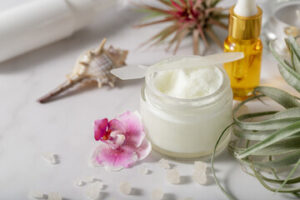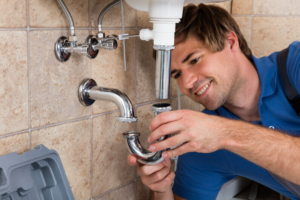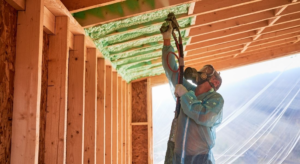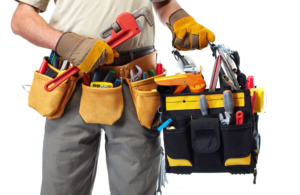The alignment of your teeth impacts your chewing and speaking. Braces help improve this, allowing you to speak clearly and chew comfortably.
Crooked or crowded teeth can be difficult to clean, leading to plaque build-up and gum disease over time. A straighter smile makes it easier to maintain proper hygiene habits and lowers your risk of oral health issues. Contact Braces Las Vegas now!

If you have misaligned teeth or jaws, it can cause a host of problems, including headaches, TMJ discomfort, speech impediments, and premature wear on the tooth enamel and gums. Orthodontic treatment, such as braces and clear aligners, corrects your bite so that it comes together properly. This alleviates issues and improves your quality of life and health.
Straight teeth make it easier to brush and floss effectively, reducing the buildup of plaque and bacteria that can lead to gum disease. They also allow you to chew more comfortably, improving the digestion process as your teeth break down food before it reaches your stomach.
The improved bite that comes with having braces also reduces the strain on your jaw joints, known as your temporomandibular joints (TMJ). This helps to prevent a condition called TMJ/TMD, which can lead to pain and headaches. Additionally, a well-aligned bite prevents excessive pressure being placed on specific teeth when you chew, which can result in early wear and tear that leads to tooth loss.
Having braces can also improve your speech clarity by shifting crooked or misaligned teeth to their proper position, which eliminates the speech impediments that many people suffer from, such as a lisp or stutter. It can also close spaces between teeth that cause whistling when you speak.
The type of braces you have depends on your needs and preferences. Traditional braces use metal brackets and wires to move the teeth. They can be augmented with elastics or hooks to add extra pressure or help close gaps between the teeth. Other types of braces include self-ligating braces that use a hinged door on the bracket to clip the arch wire into place, which reduces friction and allows for faster movement. Power chains, or elastic chains, are made of many connected elastics that can increase the amount of pressure being put on the teeth to speed up the movement and close gaps more quickly. Lastly, closed coil springs can be used to create space between two teeth or close gaps. If you are allergic to nickel, your orthodontist can use other materials for the bands and hooks.
Clearer Speech
Clear speech research aims to understand how clear-speaking talkers modify their natural conversational speech to achieve high intelligibility. This type of research can lead to the development of algorithms and signal-processing schemas for use in speech-assistive technologies and communication strategies. It can also shed light on the interaction between higher level cognitive and lower level sensory and perceptual factors that impact language processing.
For example, studies investigating the acoustic cues that distinguish clear speech from conversational speech have found that the articulatory adjustments made in clear-speaking talkers include vowel space expansion and CV coarticulation maintenance. Vowel space expansion enlarges the acoustic distance between phonemes, allowing listeners to perceive contrastive phonological categories more clearly. This is particularly true when vowel formant values are heightened in clear speech (Picheny et al., 1986; Schum 1996; Maniwa and colleagues, 2008).
The intelligibility benefits of clear speech produced at different speaking rates have been studied by Krause and Braida (2004). They found that the intelligibility gains of clear speech at normal/conversational speaking rate were significantly smaller than those produced at slower speaking rates. However, they did not find any direct relationship between a faster speaking rate and an expanded vowel space. Moreover, they did not find any evidence that increased articulatory intensity was responsible for the decreased intelligibility gains associated with a faster speaking rate.
Studies of the acoustic characteristics of clear speech have also been conducted by Bradlow and Alexander (2007). They manipulated the availability of semantic context to determine whether this cue could compensate for the reduced intelligibility benefits of clear speech compared to conversational speech. They also analyzed the durational and prosodic characteristics of clear speech to see if these were different from that of conversational speech.
They reported that both native and non-native listeners enjoyed a greater intelligibility advantage when speech was presented in clear than conversational speech, even when the speech stimuli were matched for duration. They speculated that the smaller clear speech benefit for non-native listeners compared to native listeners was due to their inability to take full advantage of the language-specific clear speech enhancements. They further investigated this by examining the contribution of temporal envelope and temporal fine structure to speech recognition in both clear and conversational speech.
Less Bone Loss
Correcting misaligned teeth not only improves the aesthetics of a smile, it also helps prevent other health issues such as cavities and gum disease. Crooked teeth are harder to clean and floss, which can lead to bacteria forming in the pockets between them. This can cause tooth decay, periodontal (gum) disease and other serious problems. Straight teeth are easier to brush and floss, which reduces the likelihood of these conditions.
In addition, crowded or crooked teeth can cause the jawbone to lose its density. This can lead to other health issues such as chewing difficulty, temporomandibular joint dysfunction (TMD) and worn down enamel. Braces move crowded or crooked teeth into their proper place, alleviating this issue and helping to protect the teeth and bones in the mouth.
A good orthodontic treatment plan will take between one to three years, followed by a period of wearing a retainer. This is because the teeth, gums and bone take time to adjust to their new positions. However, today’s braces are more comfortable than ever and apply a constant, gentle pressure to help teeth move in their new spots.
Several different types of brackets are available to fit the unique needs of each patient. These include metal, ceramic and clear braces. Ceramic and clear braces are less visible, so they can be a great option for adults or those who may be self-conscious about the appearance of traditional metal braces.
There are also a variety of ligatures and elastic bands that are used to hold the archwire in place within each bracket. These are available in a wide range of colors and can be changed at each appointment. Some systems use elastomeric or stainless steel ligatures, while others (like self-ligating) don’t need ligatures at all.
Another important component of a good orthodontic treatment plan is the molar bands. These are used around molars that might not hold a bracket (like the back molars) and can be inserted into holes or slots on the teeth. These are placed in order to maintain the stability of the archwire and prevent the teeth from shifting during treatment. If a molar band becomes loose or dislodged, it is important to schedule an appointment as soon as possible.
Improved Self-Esteem
In many cases, having braces can give individuals a confidence boost in social situations. This is because they can correct any misalignments in the teeth that might make them look crooked or extra spaced. These kinds of issues can make people feel self-conscious and reluctant to smile or show their teeth.
But braces don’t just help improve the appearance of a smile, they also address bite problems that can lead to chewing issues and discomfort. By fixing these malocclusions, braces can help restore a person’s sense of self-esteem and give them the motivation to take on new challenges in their life.
Some people may feel that the metal brackets and wires of traditional braces are unsightly, which can make them feel less confident about their appearance. However, these days there are more discreet orthodontic options for adults. For example, ceramic braces use a white or tooth-coloured material and are less noticeable than metal ones. There are also lingual braces which are placed on the back of the teeth and are not visible from the front. Invisalign is another option which utilises clear plastic aligners to straighten the teeth over time.
Those with braces can still wear fashionable clothes or hairstyles to shift the attention away from their teeth for the short duration of their treatment. They can also practice good oral hygiene to ensure their teeth are clean and free from any bacterial plaque that can lead to gum disease or other health issues.
Overall, the long-term benefits of having braces far outweigh any temporary dips in self-esteem during the treatment period. A straight, healthy smile is an asset that can serve a person well into their adult years, giving them confidence in job interviews and relationships. The experience of overcoming the challenges involved with having braces can also build resilience and strength, which they can carry into future challenges.








